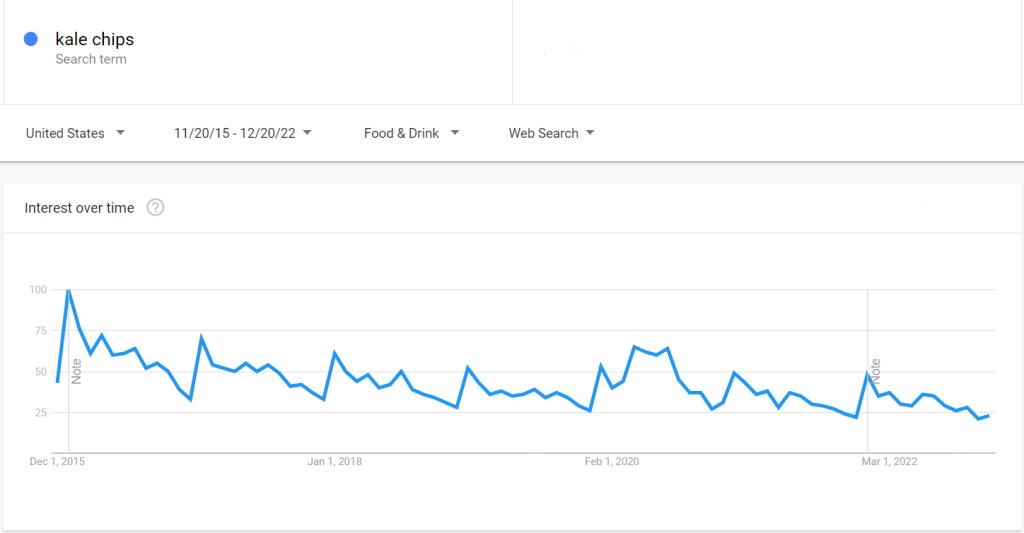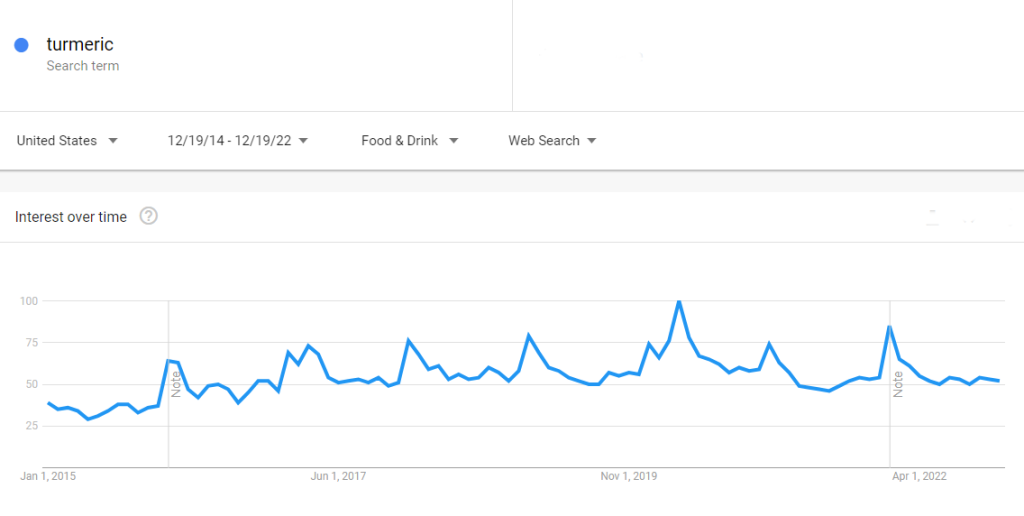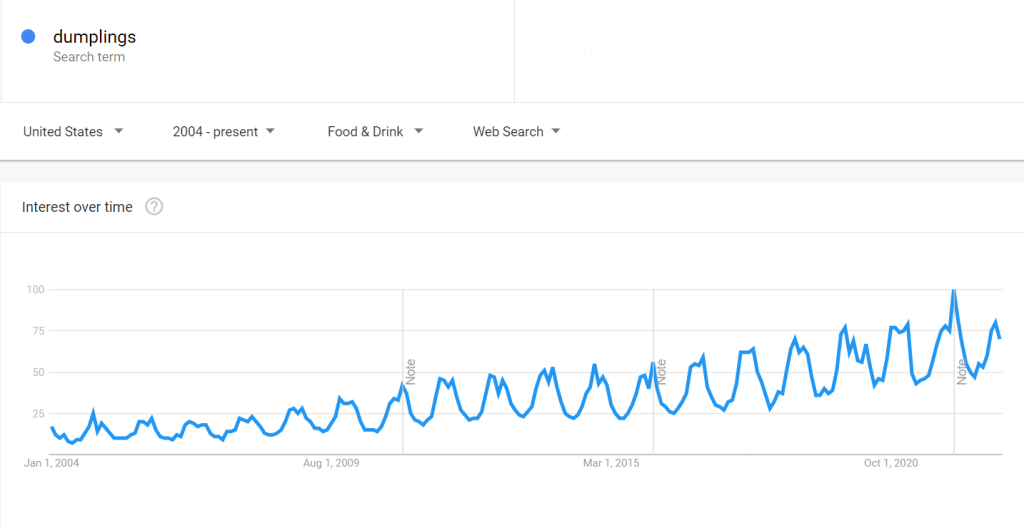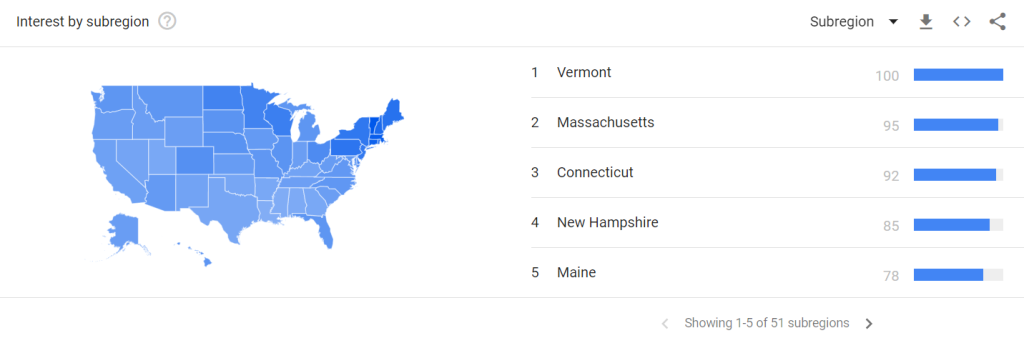At the end of every year, many culinary agencies, food writers, and data nerds look ahead to the next year’s food and beverage trends. Food & Drink Resources (FDR) is no different. Since 2015, much of our blog content has centered around food trends, including this one here that we wrote in November 2015 to predict the food, drink, CPG, and multi-unit restaurant trends for 2016 in the United States.
We wanted to know how our predictions fared after seven years, so we’ve updated this article to reflect that. Did the food trend come to be? Has the flavor or ingredient or style of cooking stood the test of time? Did it go from a trendy Instagram opportunity to a long-term cultural adoption?
But First, What Influences Food And Beverage Trends?
Food trends are influenced by many things including effective public relations campaigns (looking at you plant-based meat), industry leaders, health fads of the day, and popular culture (including who is eating what on popular shows – like Ted Lasso’s biscuit recipe).
So much has happened in seven years. Here’s a quick list of a few events that affected food trends:
- Millennials are growing up. Gen Z is different.
- COVID
- Air fryer and Instapot
- Popular diets like ketogenic, Whole30, paleo, etc.
- Plant-based products from Impossible Foods and Beyond Meat launched around 2011, took off in 2019, and are now more commonplace.
- Instagram Reels, TikTok, and YouTube Shorts
- Extraordinary supply chain and staffing shortages
Next, FDR’s Methodology For Recognizing Trends
Recognizing trends as they are emerging is part art and part science. Thankfully, we like to eat, which makes the observational part fun. All of us at Food & Drink Resources are visiting new restaurants, following up-and-coming chefs in local restaurants, and paying attention to new concepts and menu items in culinary centers (such as New York, Los Angeles, and even Denver/Boulder and Houston.)
For the science half, we look to industry associations and research organizations such as Mintel, Technomic, and others we link to below. FDR’s own consumer research arm provides insights from our onsite focus groups, CLTs, and other tests, too.
We also look at Google Trends, a Google tool that provides analytical data of top Google search queries across various regions and languages. We recognize this data is not bulletproof and that it is not focused on buying decisions, but rather on questions that individual consumers take to the web to answer. However, we still find it very insightful and are using it here to prove whether or not our trend predictions were on target.

Now For Our Food Trend Analysis…
Snack Trends
Prediction: Jerky of all types including beef, bison, venison, elk, and salmon flavored with sriracha.
Reality: We agree with Natural Grocers, which says there are so many snack options that consumers are overwhelmed and many are turning away from mixes and bars and turning to simple, straightforward food like jerky. But that’s the case today.
Back in 2016, we predicted jerky was making a comeback because…sriracha. The fermented hot sauce had become popular and jerky lovers had noticed.
Except…it turns out that only a few sriracha jerky products landed in the marketplace (and remain today) and despite quite a few popular recipes on Pinterest, we didn’t see much interest (especially after 2018). Sriracha, too, is not as popular as it once was.
Prediction: Elevated spreadable cheese.
Reality: This one was less a prediction and more an observation of what was happening at the time. But the growth hasn’t stopped. There’s been a 130% increase in “spreadable cheese” Google search queries since 2015.

Plants: Grains And Veg For The Win
Prediction: Ancient grains as ingredients in everything.
Reality: Our prediction may have been a year premature. The year 2017 saw more search traffic than in 2016, especially in some of the country’s fittest states (Vermont, Colorado, and Washington) perhaps because of True Food Kitchen’s popular Ancient Grain Bowl and Panera’s Ancient Grain & Arugula Salad.


Ancient grains like teff, millet, faro, amaranth, and sorghum have stood the test of time. We think they will remain on menus seeing how they are gluten-free, nut-free, soy-free, and high in protein. In fact, this Food Business News article shows that consumers want to know more about ancient grains.
Prediction: Beets will be the star.
Reality: We weren’t the only ones with high hopes for beets. Unfortunately, Google Trends shows no real changes in search traffic for the root vegetable. Our trend watching on social media and in food news doesn’t show us much other than a few cool product launches. Come to think of it, we have not done much recipe development around beets either.
However, beet salads are prevalent on many Southern California menus. Perhaps beets will see their time still.
Flavor Trends
Prediction: Sour is still popular as are fermented delicacies like kimchi and pickled veggies.
Reality: Sour is important enough of a flavor to get its own real estate on the tongue, yet it doesn’t show up in our western diets quite as much as it does in other parts of the world. Kimchi is a great example of this. The tangy and hot 4,000-year-old Korean staple is rising in popularity thanks to gut health awareness (more about gut health and food trends here), the keto diet, and the continued trend of more international flavors across all dayparts.


Other sour foods have had their moment in recent years, too. Sour beer, sourdough, and the list goes on.
Prediction: Bitter is big. Try kale chips or the bitter chocolate bar from KIND.
In this blog post, we wrote that America is finally catching up to what the rest of the world has known all along – bitterness can be complex and interesting.
Reality: The trend toward bitter flavors had begun prior to our 2016 prediction. Quite a few news articles appear around the web through 2019, including this one from FSR on bitter beverages, but not much after.
According to Google Trends, searches for the term “bitter” has subtly increased in the last seven years, but the related search data doesn’t tell us much. Similar to the term “dark chocolate.” There is Google search growth, but nothing extraordinary that we can tell. However, “kale chips” searches have clearly decreased since our report seven years ago. This trend was short-lived and had already passed by January 2016.

Prediction: Smoke and fire.
We said: Chefs will do a lot more cooking over a live fire and create a lot more smoked foods – everything from syrup to salt to veggies. Barrel-aged foods will be popular, too.
Reality: The term “aged” shows a gentle uptick on Google Trends since 2016 with peaks in December (likely for all those Christmas gifts of aged steak and aged bourbon). “Smoked” has a more dramatic search increase, again with peaks in November/December for all of the smoked meat recipes served at the holidays. The term “charred” shows an even more dramatic rise in search traffic with an especially high peak in interest in early 2022.
Perhaps we were a little ahead of the trend on this last one. Most intriguing about charred searches is the related queries that show up. We’d eat all these things:
- charred greens
- charred broccolini
- charred lemon chicken piccata
- charred tomato toast
- charred scallion dip
- charred cabbage
Like we said in this 2016 blog post that talks more extensively about the bitter smoked, barrel-aged, charred food/drink trend, eating aged foods and cooking with live fire is nothing new. However, the practice has gone in and out and back into fashion over time. Today, it is definitely IN FASHION given the movement toward “meals out as an experience.”
Restaurants are no longer just competing with each other. In 2022-2023, restaurants are competing with home cooks. To win, you’ll see more opportunities for entertainment while dining.
Prediction: Expect extra bold flavors. Hello, harissa and gochujang.
Reality: This flavor prediction was right on. Harissa subtly ticked up until January 2018 when it peaked for the first time. It continues to grow in interest still today.

Then there’s gochujang. In 2018, the Korean red chili paste was the 10th most popular food searched for on Google…out of all searched for food terms in the United States! That’s a lot of fermented deliciousness.
Prediction: Turmeric is THE spice of 2016.
Reality: Yup. Turmeric saw a big jump right at the moment we made the prediction that it would be the 2016 pageant winner. Most people seem to be Googling for beverages such as turmeric ginger tea, turmeric lattes, and turmeric juice. There are also a lot of turmeric search queries relating to weight loss and heart health as well as skin treatments, especially sunburns.
According to SupHerb Farms’ 2023 Food & Beverage Trend Report, turmeric has a 3.1% menu penetration and has seen a +47% group in the last four years. However, if Google Trends is correct, interest may be waning.

Cooking, Concept, And Beverage Trends
Prediction: No-waste root-to-stalk cooking takes the lead.
Reality: Whatever you call it – root to stalk, root to stem, root to leaf, snout to stem, or nose to tail – this was and continues to be a reasonable trend to predict, especially from high-end local restaurants or at-home chefs who cook with the environment in mind.
Will root-to-stalk cooking ever go mainstream for today’s American consumers?
We don’t think so.
This is a case of good PR for restaurants and other food organizations that value sustainability and as well as dedication from a small group of home cooks. Your average, everyday consumer probably doesn’t have the time, energy, or interest to use all parts of the cow at dinnertime.
Plus, Google Trends doesn’t have enough search data to provide insight. Similar to FDR’s farm-to-cocktail assessment that we discussed in this older blog post. Root-to-stalk is less a trend and more a talking point.
Prediction: More dressed-up peasant food, like dumplings.
Reality: Can we get a high-five for our dumplings observation? Things were warming up in 2015/2016 but really took off in 2021 with many new dumpling shops turning up in urban areas. There are more frozen dumplings in the grocer’s freezer section these days, too, and there is no slowdown in sight. At least that’s according to Google Trends and other forecasters who continue to predict significant growth.

Prediction: Spam and other Hawaiian flavors.
Reality: Yup. Back in 2016, we talked quite a bit about Hawaiian flavors on the mainland (which included this shave ice recipe) as poke bowl concepts were popping up everywhere. Google searches for “poke bowls” peaked in July 2016 and remained steady until mid-2022 when interest started to rise again.
This rise might be a result of continued growth for Hawaiian concepts (as reported from the latest National Restaurant Association Show). The increase in restaurant brands is offering the spotlight to other Hawaiian dishes we predicted would take the spotlight seven years ago, too. Including:
- loco moco – hamburger patty and rice topped with gravy and a fried egg
- spam musubi – grilled SPAM attached to a block of sushi rice with a strip of nori
One interest angle from Google Trends shows that Las Vegas has an extraordinary search interest in SPAM musubi. We think this is related to the four Aloha Kitchen restaurant locations that feature the food on its appetizer menu. By the way, did you know spam musubi has its own official day?
Prediction: Pasta is back on the menu.
Reality: We called it for pasta back in 2016, but do you know when it really took off? April 2020. In the midst of the global COVID lockdown. Pasta is the ultimate in comfort food. It’s reliable. Filling. Tastes like the safety of home.
What is especially interesting about the Google Trend data is the focus on feta pasta, lentil pasta, zucchini pasta, keto pasta, and chickpea pasta.
Prediction: International flavors for breakfast.
Reality: In 2016, we said to look out for some interesting dishes like shakshuka, chilaquiles, and congee, all of which are being searched for on Google now more than ever. Though, we also predicted silog – the national breakfast of the Philippines – would trend upward. It didn’t. (Read more about our take on 2016 international flavors for breakfast in this blog post.)
Conversation about global cuisine in the morning continues today in 2022/2023. In the same SupHerb Farms’ report mentioned above, they say Japanese and Vietnamese breakfast bowls, especially, are becoming more popular.

Prediction: International comfort food.
Reality: In 2016, the National Restaurant Association reported that “ethnic condiments and spices [were] the 11th biggest food trend of the year and ethnic-inspired breakfast items [were] the 16th.“
Many of the items on our list of 2016 food trends could fall into the comfort food category including the Filipino foods and fermented foods mentioned above. It is hard to quantify the success of this trend prediction, but generally speaking, we enjoy seeing so many flavors from the world make it onto our plates and we don’t see it stopping. We hope it doesn’t.
Prediction: Acai bowls are popping up.
In 2016 we said: Unusual fare (like acai bowls) is popping up – and will continue to.
Reality: Acai (aa·saa·ee) bowls aren’t so unusual anymore. If you still aren’t sure what they are (where have you been?), some describe them as smoothies in a bowl or a yogurt sundae. Back in late 2015, acai was mostly searched for on Google in Hawaii and a few other warm states like California, Nevada, Arizona, and Florida. Today, it is more widespread both geographically and in sheer numbers. (Thanks to Starbucks’ “pink drink.”) Pretty good for a palm tree seed.
Prediction: Bubbles!
We said: From sparkling mocktails to Prosecco, chefs and diners alike will be enjoying their bubbles in 2016.
Reality: We don’t want to brag, but….holy bubbles! Not only was bubbly popular on the menu in 2016, but with both White Claw and Truly Hard Seltzer coming on the market that year, this beverage trend saw subtle growth at first and then went up in a big way. Those peaks you see below are in the summer months (with one peak in January 2020). Google Trends tells us that New Englanders – in particular – love their seltzers.


To Sum Up
Throughout 2016, we made some other trend predictions that talked about maple flavor, cooking with lard, and different types of bread on the table – including monkey bread – among others. Each of these foods had a moment, but there wasn’t a whole lot notable news since our original writing in 2016. We didn’t feel the need to update here.
All in all, our chefs won some of our original 2016 food trend predictions, were ahead of the game on others, and missed the mark on a few (sorry, beats), but we had fun on the way.
Thanks for stopping by and reading the Food & Drink Resources blog. Here we talk about food trends, culinary innovation, and the work of our team.
